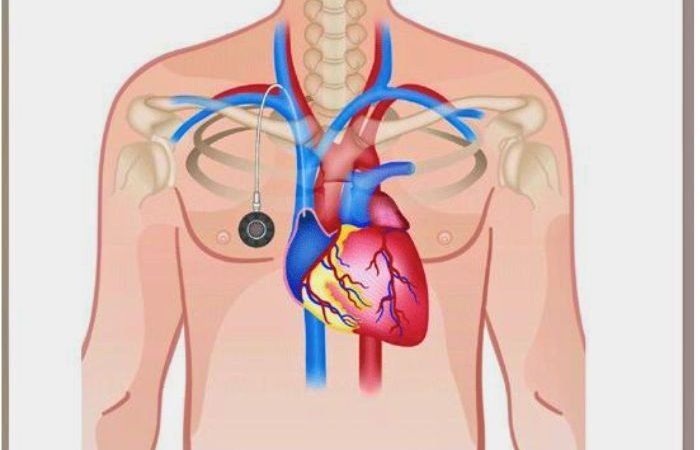Chemo Port Insertion and Care at Advanced Oncology Clinics
A chemo port, also known as a port-a-cath, is a small medical device implanted under the skin to make the administration of chemotherapy more convenient and comfortable. At Advanced Oncology Clinics, we offer chemo port insertion as part of our comprehensive cancer care services. Our expert team ensures that the procedure is performed safely and effectively, allowing patients to receive their chemotherapy with minimal discomfort and fewer needle sticks.

Understanding the Purpose of a Chemo Port
A chemo port is designed to make chemotherapy treatment more manageable for patients who require long-term or frequent infusions. Key benefits of a chemo port include:
- Reduced Discomfort: A chemo port minimizes the need for repeated needle sticks in the arm, which can become painful over time.
- Improved Convenience: With a chemo port, chemotherapy can be administered more quickly and efficiently.
- Lower Risk of Infection: Ports are designed to be less prone to infection compared to regular IV lines.
Chemo Port Insertion Procedure
The insertion of a chemo port is a minimally invasive procedure performed under local anesthesia, sometimes with sedation. The process typically involves:
- Preparation: The patient is prepped for surgery, including cleaning the insertion area and administering local anesthesia.
- Insertion: A small incision is made, and the port is placed under the skin, usually on the chest. A catheter connects the port to a large vein.
- Closure & Healing: The incision is closed with sutures or surgical glue, and the patient is given instructions on how to care for the site as it heals.
Types of Chemo Ports
There are different types of chemo ports available, each with specific features suited to different treatment needs:
- Single Lumen Port: The most common type, with one opening that connects to a catheter.
- Double Lumen Port: Used for patients who need two different medications or fluids administered simultaneously.
- Power Injectable Ports: These ports can withstand the pressure of power injections used in some imaging studies.
Types of Chemo Ports
There are different types of chemo ports available, each with specific features suited to different treatment needs:
- Single Lumen Port: The most common type, with one opening that connects to a catheter.
- Double Lumen Port: Used for patients who need two different medications or fluids administered simultaneously.
- Power Injectable Ports: These ports can withstand the pressure of power injections used in some imaging studies.
Comprehensive Cancer Care
At Advanced Oncology Clinics, chemo port insertion is part of a broader, integrated approach to cancer treatment:
- Collaboration with Oncologists: Our surgical team works closely with oncologists to ensure that the chemo port is optimally placed for effective treatment.
- Supportive Care: We offer nutritional counseling, psychological support, and pain management to help patients manage their overall treatment journey.
- Ongoing Monitoring: Regular follow-ups to ensure the port is functioning properly and to monitor for any potential complications.
Managing Side Effects & Recovery
While chemo port insertion is generally safe, patients may experience some side effects and require time to adjust:
- Pain & Discomfort: Mild pain or discomfort at the insertion site is common and can be managed with pain relievers.
- Infection Prevention: Proper care of the insertion site is essential to prevent infections. Patients are given detailed instructions on how to keep the area clean and dry.
- Emotional Support: Adjusting to life with a chemo port can be challenging. We offer counseling and support groups to help patients cope with the emotional aspects of treatment.
Follow-up Care & Monitoring
Regular follow-up appointments are essential to ensure that the chemo port is functioning properly and that there are no complications:
- Port Flushing: The port needs to be flushed regularly to prevent clots from forming. This is typically done during routine follow-up visits.
- Site Inspection: The insertion site is checked for any signs of infection, displacement, or other issues.
- Patient Education: Patients are taught how to care for their port at home, including signs of potential problems that should be reported to their healthcare team.
Long-Term Monitoring & Maintenance
Chemo ports require ongoing maintenance to ensure they continue to function properly throughout the course of treatment:
- Regular Check-ups: Periodic check-ups to assess the port’s condition and address any issues that may arise.
- Monitoring for Complications: Continuous surveillance for any potential complications, such as port infections or blockages.
- Support Access: Patients have ongoing access to our care team for any concerns or questions about their chemo port.
FAQ
Most frequent questions and answers
A chemo port is a small device implanted under the skin to make chemotherapy administration easier and less painful
The port is inserted through a minimally invasive procedure under local anesthesia
Recovery time varies but typically ranges from a few weeks to a few months.
Risks include infection, clotting, and port displacement, but these can be managed with proper care.
Care involves keeping the area clean and dry, and regular flushing of the port to prevent clots.
Yes, but you should avoid strenuous activities until the insertion site has fully healed. Learn about activity restrictions.
The port can remain in place for the duration of your treatment, and sometimes longer if needed.
If an infection occurs, it’s crucial to contact your healthcare provider immediately.
Yes, the port can be removed once treatment is completed, through a simple outpatient procedure.
Ports typically need to be flushed every 4-6 weeks if not in use
You can schedule an appointment online or call us directly. Our team will assist you in setting up your consultation.

